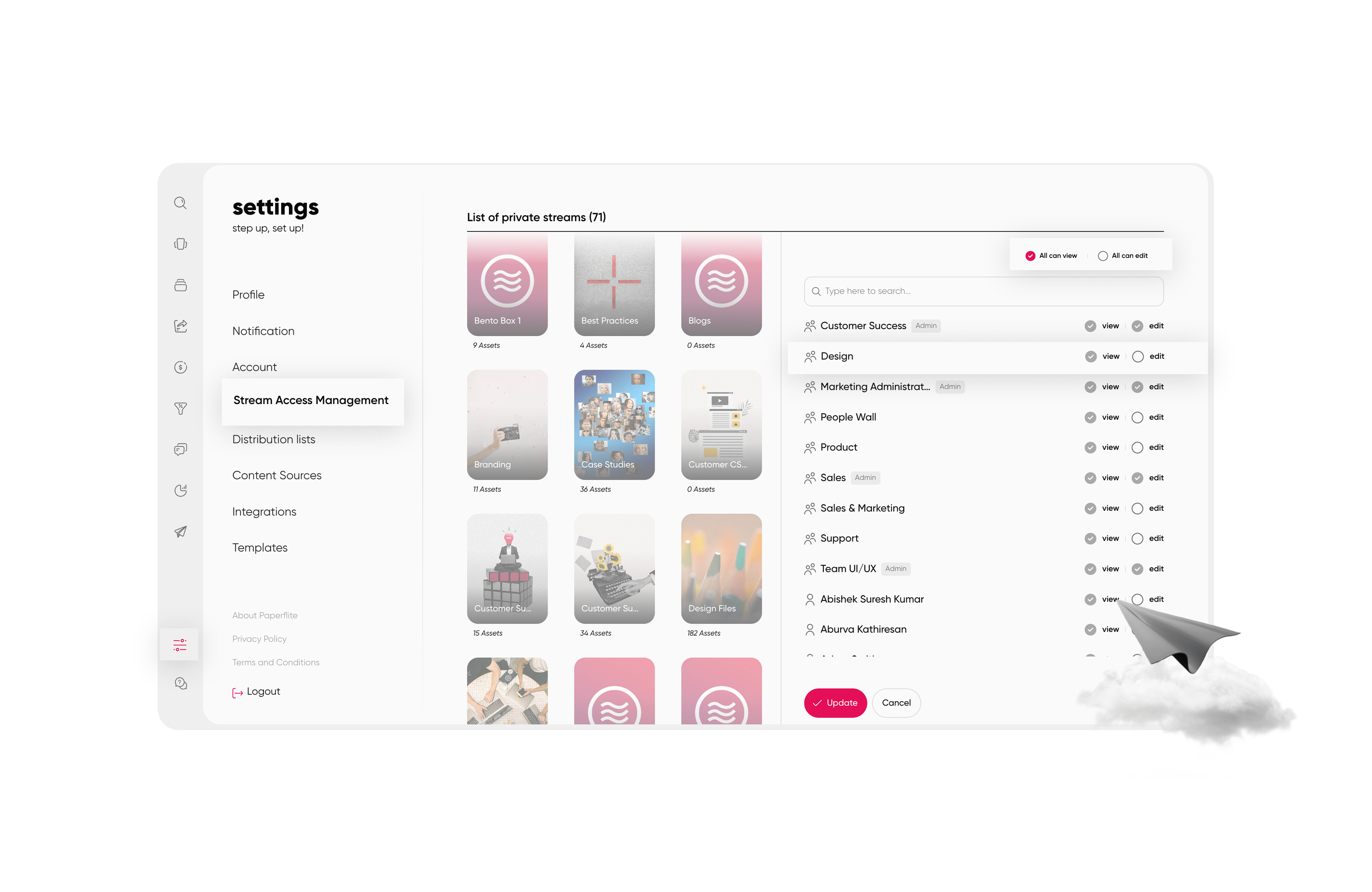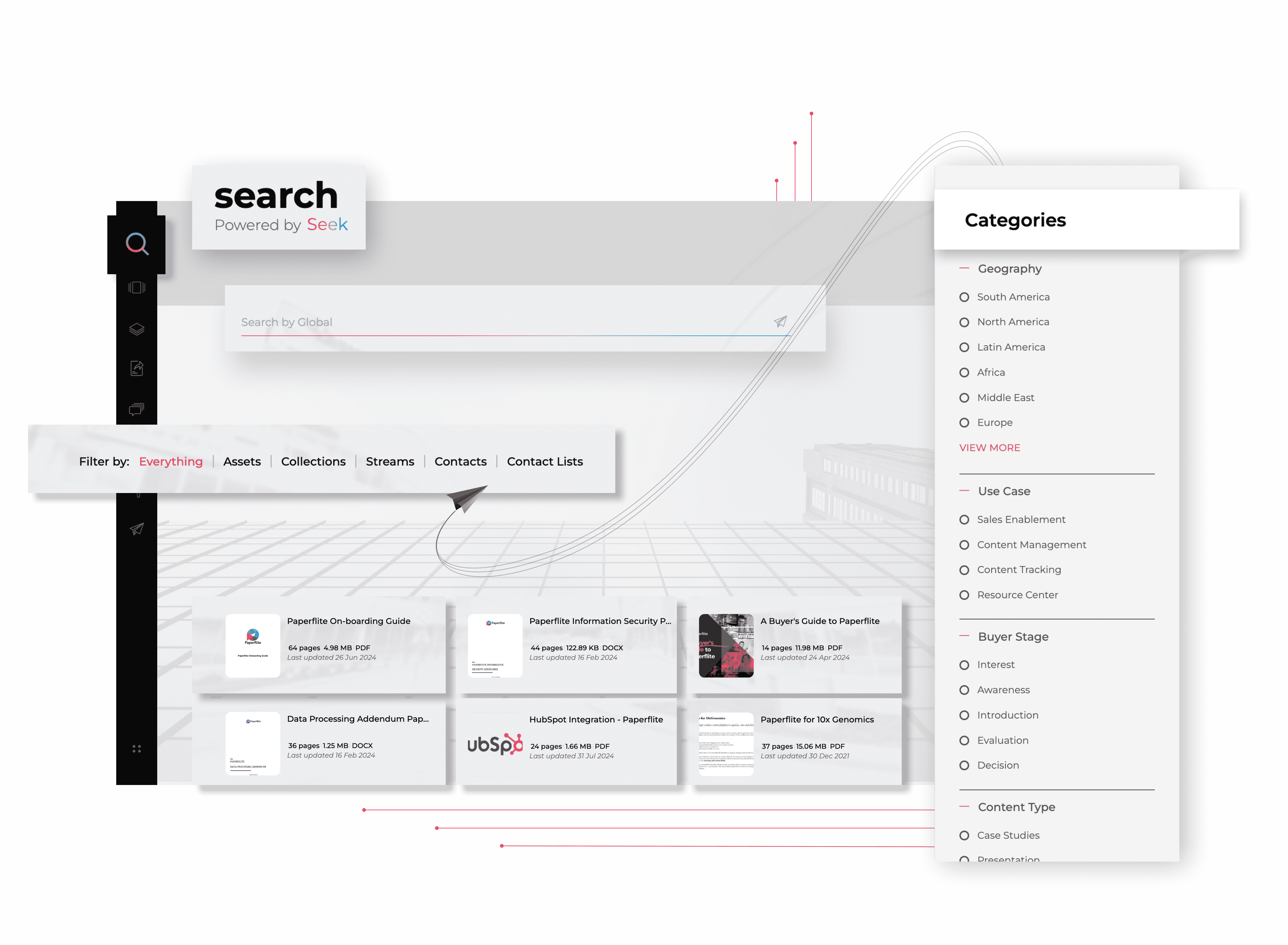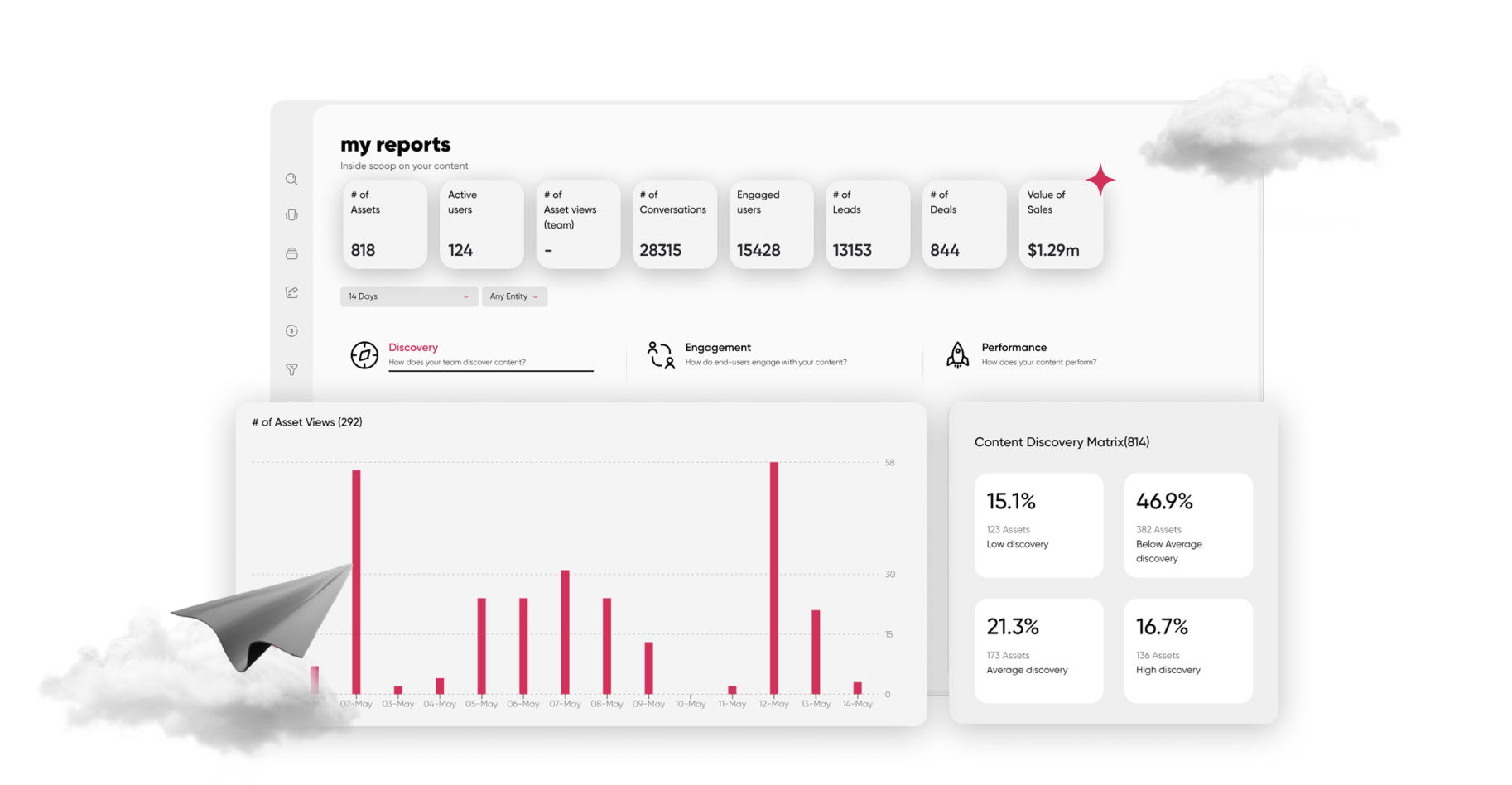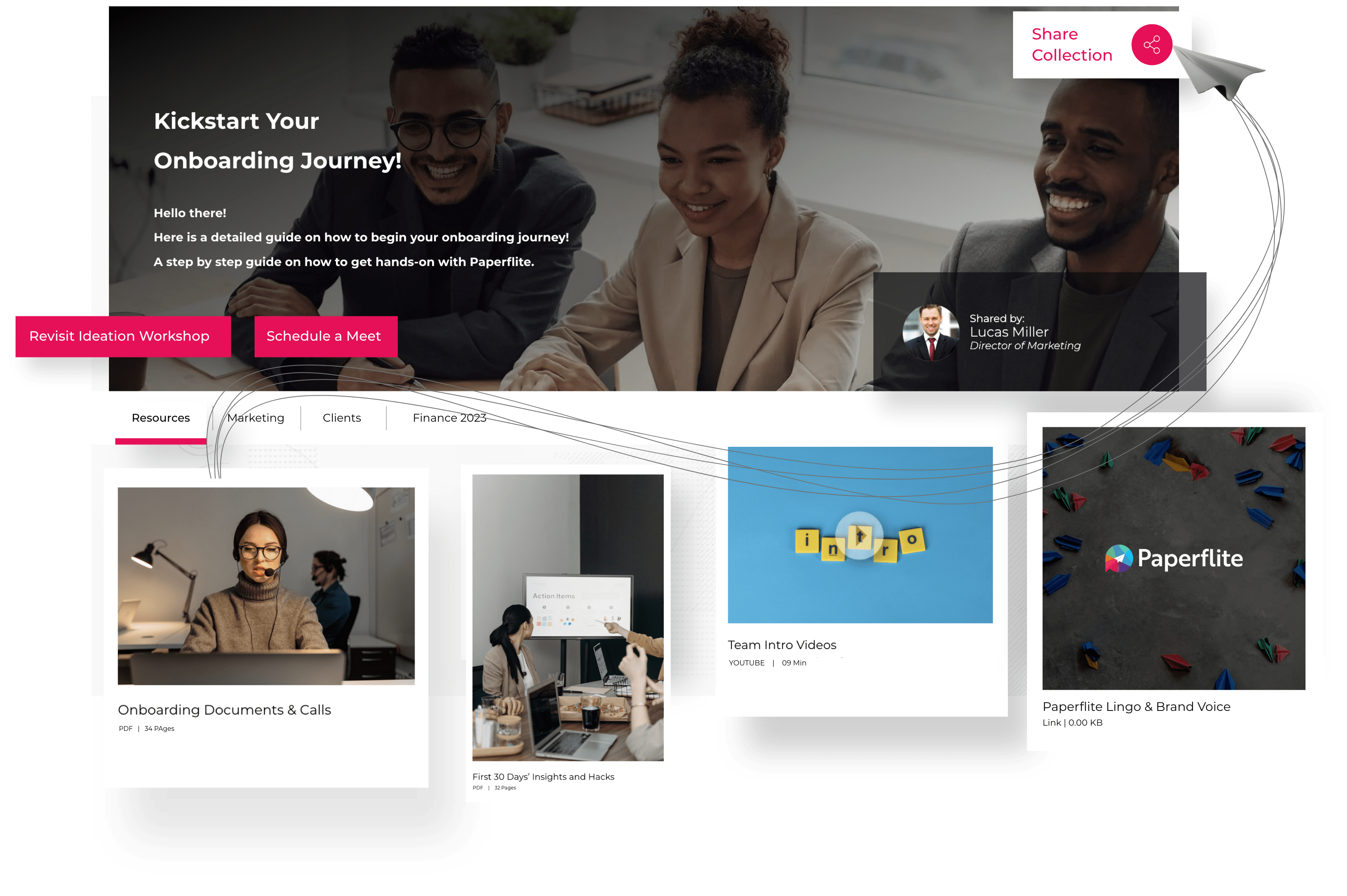5 Important components of Enterprise Content Management
Enterprise Content Management (ECM) often gets sidelined as an IT function a secure digital filing cabinet with version control and compliance checkboxes. But this view undersells what ECM truly enables: enterprise-wide confidence in content when it matters most.
Content is your currency whether you're in Marketing ensuring brand consistency across regions, Legal reviewing regulatory disclosures, Sales searching for an approved deck before a pitch, or Ops auditing documentation trails.
How that content is captured, governed, stored, and surfaced isn’t just operational it’s strategic.
Yet too many organizations think of ECM as a monolith. Buy a platform. Upload files. Done. In reality, ECM systems are only as effective as the clarity and cohesion of the components they’re built on.
ECM isn't a product it's an architecture. And it’s time we understood its parts.
In this blog, we’ll unpack the key components of ECM not in abstract terms, but with real-world application across the business. You’ll walk away with a clear picture of how each piece fits, why it matters, and how a modular ECM approach unlocks control, discoverability, compliance, and speed.
Why ECM Architecture Matters?
At its simplest, Enterprise Content Management (ECM) is a structured approach to handling your organization’s documents and content digitally, securely, and scalably.
But scratch below the surface, and ECM becomes a living system ensuring that the right people can access the right content, with the right controls, at the right time.
This capability isn’t confined to one department or team it’s essential across the organization:
- Marketing relies on it for brand control and timely asset delivery.
- Sales and CX need on-demand access to the most relevant collateral.
- HR depends on ECM to support structured onboarding and protect sensitive records.
- Finance and Legal require trusted systems of record, versioning, and compliance proof points.
- Ops and IT architect and maintain the backbone but also depend on smooth collaboration across business functions.
That’s why it’s crucial to see ECM not as a single tool, but as an interlinked architecture made up of components each designed to handle specific challenges in content management, from ingestion and classification to distribution and preservation.
We'll break down each component what it does, who it affects, and how it drives alignment, speed, and governance.
Content strategy isn’t about storage.
It’s about how well it flows, scales, and performs across teams.
Component 1: Capture – Ingesting Content with Intelligence
Let’s start at the source: content creation doesn’t begin when someone opens a Word doc.
It starts when content enters your system whether that’s a scanned contract, a product datasheet uploaded from the desktop, a form submission, or even an email attachment forwarded into the wrong inbox.
The Capture component of ECM is responsible for bringing all this content into a unified, searchable, and structured environment.
Think of it as your ECM’s intake valve and the smarter it is, the stronger your entire system becomes.
What “Capture” Does:
- Pulls in content from a variety of sources: documents, scans, web forms, emails, and synced cloud drives.
- Uses OCR (Optical Character Recognition) to convert unsearchable formats like scanned PDFs into usable, indexed text.
- Applies auto-tagging and classification to reduce human error and make downstream processing smoother.
- Handles both structured (metadata-tagged) and unstructured content types without manual bottlenecks.
Key Capabilities:
- Multi-format input: PDFs, DOCX, images, HTML, email captured and converted.
- OCR & metadata extraction: Automatically makes content searchable and structured.
- Auto-tagging & classification: Reduces the need for manual indexing.
- Bulk ingestion tools: For onboarding entire folders or syncing cloud drives.
- Integration readiness: Ingest from SharePoint, Box, GDrive, and other content sources.
Who Benefits:
- Marketing Ops & Enablement: Reduce the chaos of duplicate files and outdated assets.
- HR & Legal: Ensure secure intake of policy docs, contracts, or compliance forms.
- Sales Teams: Can trust that essential content is discoverable, structured, and approved.
- IT & Admins: Fewer manual processes and misfiled documents more automation and governance from the start.
Where Paperflite Fits:

- Paperflite makes capture easy with desktop-friendly ingestion and full-text plus metadata indexing.
- Reps and teams can upload files directly into Streams (custom content groups), ensuring content is instantly available, tagged correctly, and searchable from anywhere including via SEEK, Paperflite’s AI-powered discovery tool.
- Whether you're onboarding 200 customer case studies or syncing product documents from Google Drive, capture is handled without friction, and your content hub stays clean, compliant, and complete.
Component 2: Manage – Where Governance Meets Utility
Once your content is inside the system, the next big challenge emerges: Who can access it? When? How? And what happens if it changes?
The Manage component is where ECM shifts from being a repository to a dynamic governance engine balancing structure, flexibility, and accountability.
Management isn’t about restricting access. It’s about giving people the right access, with guardrails, workflows, and traceability built in.
What “Manage” Covers:
This component typically includes several integrated submodules:
- Document Management System (DMS): Controls access, edits, and versions of live content.
- Records Management: Applies policies for retention, deletion, and regulatory tracking.
- Workflow / BPM: Routes content through structured processes (e.g., approvals, reviews, certifications).
- Web CMS: If external-facing content is in scope, this ensures presentation layers are governed too.
Key Capabilities:
- Version control & check-in/out: Keeps a clean audit trail of every change.
- Approval workflows: Moves content through sign-offs automatically, avoiding email chains and ambiguity.
- Role-based access: Ensures that teams see only what they need and nothing more.
Who Benefits:
- Sales Enablement: Can trust that reps are using only the latest, approved campaign content.
- RevOps & Legal: Gain traceability and peace of mind through controlled document flows.
- IT & Security: Ensure that compliance protocols are baked into daily content operations not bolted on after the fact.
Where Paperflite Fits:

- In Paperflite, content isn’t just uploaded it’s governed.
- Admins and content owners can set custom user permissions, build template-based Collections for consistent distribution, and even collaborate on content in real time across teams.
- Need a legal-approved version of your product deck for APAC? Set permissions by geography.
- Want marketing to approve every datasheet before sales shares it? Build that into the workflow.
- With Paperflite, managing content becomes a layer of assurance not overhead.
Component 3: Store – Secure, Searchable Repositories
Once content is captured and categorized, where does it live and how quickly can your team get to it when it matters?
The Store component of ECM ensures that content isn’t just “saved” it’s structured, accessible, and secure.
Think of it as the backbone of every workflow, approval, and conversation that follows. Without robust storage, your ECM becomes a digital junk drawer full of content, but short on clarity.
Storage isn’t just about capacity it’s about confidence, discoverability, and control.
What “Store” Does:
- Centralizes all content internal and customer-facing into organized repositories.
- Enables tiered access so the right teams see only what they need.
- Protects assets with encryption, redundancy, and disaster recovery safeguards.
- Makes content searchable across metadata, tags, file types, and even within documents.
Key Capabilities:
- Granular access permissions: By role, geography, department, or content type.
- Full-text search indexing: So nothing is ever “lost” in a folder again.
- Backup & redundancy protocols: Ensuring continuity during outages or transitions.
- High-availability architecture: Especially critical for global, always-on teams.
- Version tracking: Keeps document histories clean and consistent.
Who Benefits:
- Marketing Ops: Quickly locate approved assets without file hunts.
- Customer Success & Sales: Access the right content in live conversations instantly.
- CIOs & IT: Meet audit and compliance requirements while simplifying infrastructure.
- Compliance Teams: Trust that sensitive documents aren’t sitting in unsecured drives.
Where Paperflite Fits:

- Paperflite’s Content Hub is designed as a searchable, role-aware repository organized into Streams for intuitive navigation.
- Its SEEK-powered discovery ensures that even large libraries remain agile.
- Permissions, expiration settings, and AI-enhanced search give every user what they need without noise.
Component 4: Preserve – Enforcing Retention and Compliance
If Store is about access, Preserve is about accountability.
This component ensures that content doesn’t just exist it endures with the right controls in place, for the right amount of time, for the right reasons.
Whether you’re in a regulated industry or just aiming for audit-readiness, Preserve turns your ECM into a compliance asset, not a liability.
It’s not enough to store content you need to prove it hasn’t been tampered with, forgotten, or deleted too soon.
What “Preserve” Does:
- Applies long-term retention schedules to ensure compliance with policies and laws.
- Supports legal holds, ensuring content remains immutable during investigations or disputes.
- Maintains audit logs to track every interaction, change, or access.
- Creates a tamper-proof environment with immutable archives and traceable access paths.
Key Elements:
- Policy-driven archiving: Enforce timelines and review cycles automatically.
- Legal & regulatory integrity: For HIPAA, GDPR, SEC, and more.
- Comprehensive logging: Who saw what, when, and from where.
- Secure deletion workflows: Ensures nothing is prematurely purged.
Who Benefits:
Pharma: Documentation of drug approvals, trial data, HCP engagement.
Finance: Transaction records, audit trails, client communications.
Healthcare & EdTech: Compliance with retention mandates and patient/student data protocols.
Where Paperflite Fits:

- Paperflite integrates audit tracking, user access logs, and secure expiration settings at the platform level.
- Teams can set expiry policies per asset or Collection, monitor content engagement histories, and prove compliance with access records without needing third-party overlays.
Component 5: Deliver – Sharing, Personalizing, and Tracking Content
You’ve captured the content, managed it well, stored it securely, and preserved it for compliance. But all of that means nothing if your content can’t reach the right people with the right context, control, and clarity.
The Deliver component transforms ECM from a passive system into an active enabler connecting content with the people who need it, when they need it, and showing you what happens next.
Delivery isn’t just about sending files. It’s about crafting content experiences that feel intuitive, professional, and secure.
What “Deliver” Does:
- Packages content for internal teams, prospects, partners, or regulators with role-specific controls.
- Enables microsite-style experiences so recipients can explore content rather than download-and-guess.
- Embeds usage analytics to help teams measure engagement, iterate faster, and build smarter assets.
Key Capabilities:
- Collections (microsites): Curated, branded content hubs with sections and layouts.
- Gated access: Personalized links, OTP security, and expiration settings.
- Distribution integration: Share via CRM, email platforms, or directly from cloud tools.
- Engagement insights: Know what’s opened, clicked, downloaded, and for how long.
- Live updates: Edit content after it’s shared no need to resend or resend again.
Who Benefits:
- Sales Enablement: Share launch-ready content with AEs and track what gets used.
- Sales Teams: Build customized deal rooms for buyers, partners, or procurement stakeholders.
- Marketing: Push campaign collateral with embedded analytics for real-time optimization.
- Legal/Procurement: Share contracts or compliance docs with full access tracking.
Where Paperflite Fits:

- Paperflite shines in the Deliver layer.
- With Collections, teams can create stunning microsites with banners, CTAs, and curated content flows.
- Deal Rooms bring multi-stakeholder buying groups into one secure space, while Engage lets reps chat with prospects while they’re reading content.
- Advanced tracking gives visibility into what’s being consumed, by whom, and how it’s performing without relying on guesswork or disconnected tools.
Process/Integrate – Connecting Content with Ecosystems
While not officially counted as a core ECM component, integration is the connective tissue that determines whether your content system is merely functional or fully embedded into the way your business operates.
No matter how sophisticated your ECM’s capture, manage, or deliver capabilities are, their true value emerges only when they talk to the tools your teams already live in.
Think of it as giving your content system a passport one that allows it to move across CRMs, learning platforms, CMS portals, and communication tools with ease.
Whether it’s syncing content libraries from cloud drives, enabling SSO-based access across departments, or triggering content workflows through webhooks, this layer ensures that your ECM is not a standalone structure but a fluid part of your business fabric.
It’s what transforms ECM from a backstage archive into a dynamic participant in onboarding, sales conversations, legal approvals, campaign execution, and more.
In essence, integration doesn’t sit beside ECM it runs beneath it, quietly powering its relevance, reach, and responsiveness.
FAQs on ECM Components
Do I need all five components to get started?
Not necessarily. Most organizations begin by solving their most visible problem like scattered content or inconsistent access and expand from there. The key is to choose a platform or strategy that allows for modular growth without rework.
Can “Manage” work without “Capture”?
Technically, yes but without structured capture, you're managing chaos. Without metadata, classification, or ingestion protocols, content governance becomes reactive instead of proactive.
How do I balance access vs. security in “Store”?
Start by mapping access based on roles, not teams. Implement tiered permissions, monitor usage, and layer in governance tools like version control, encryption, and activity logs. Remember: frictionless doesn't mean boundaryless.
Which ECM components impact compliance the most?
Preserve is your compliance core handling retention, legal holds, and audit trails. But Store, Manage, and even Capture play critical supporting roles by ensuring traceability, access control, and data integrity from day one.
Parting thoughts:
Components Alone Don’t Win - Strategy Does
ECM isn’t a single system it’s a stack of interdependent components, each designed to solve a specific content challenge. But the real value comes from how you align those components to your workflows, roles, and goals.
Start with where the friction is missing files, compliance gaps, slow approvals and build outward. You don’t need all five components on day one. But you do need a roadmap that grows with your needs.
The goal isn’t to “have ECM.” The goal is to enable execution, securely and at scale. With the right architecture and the right tools you can.
